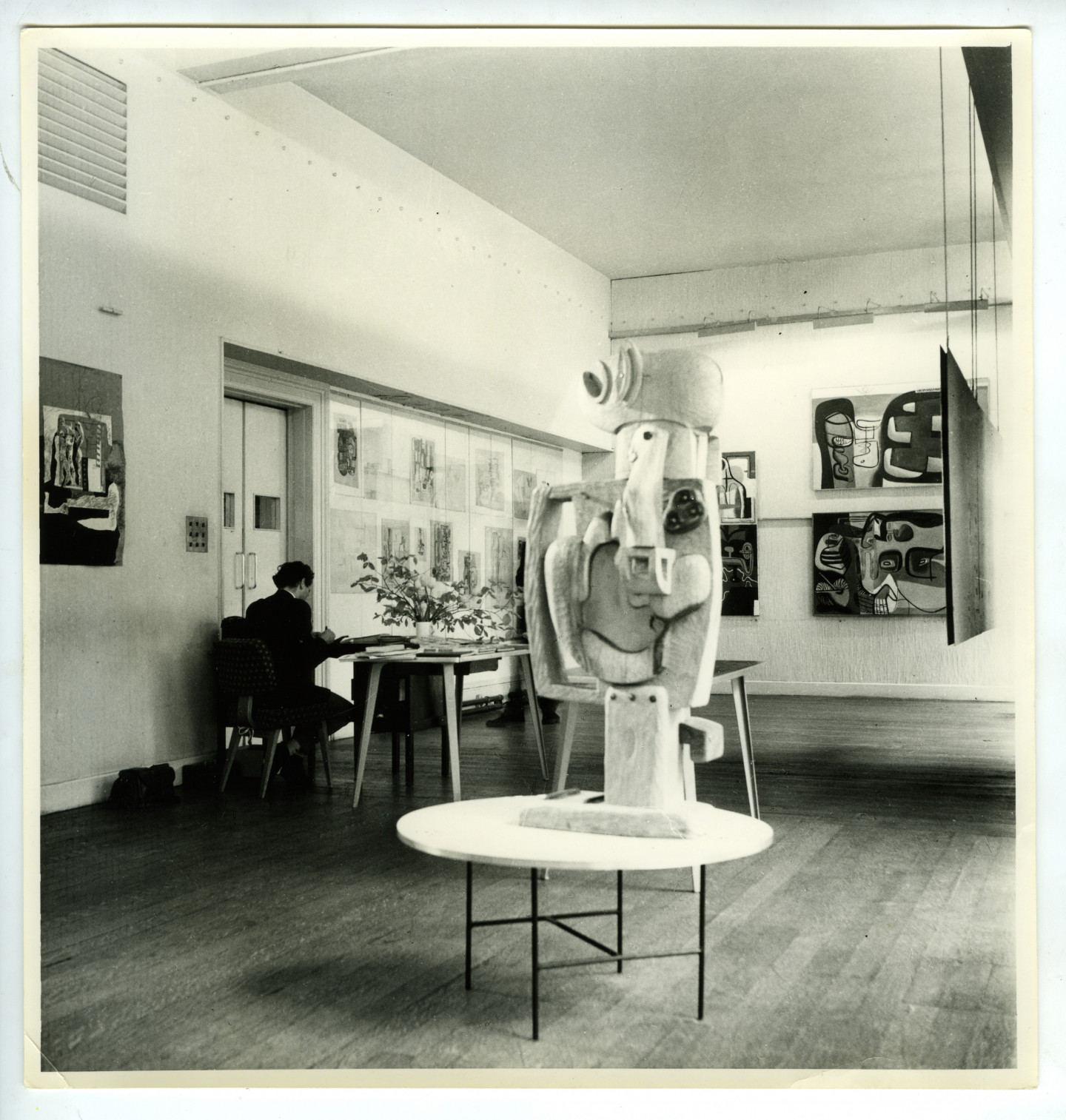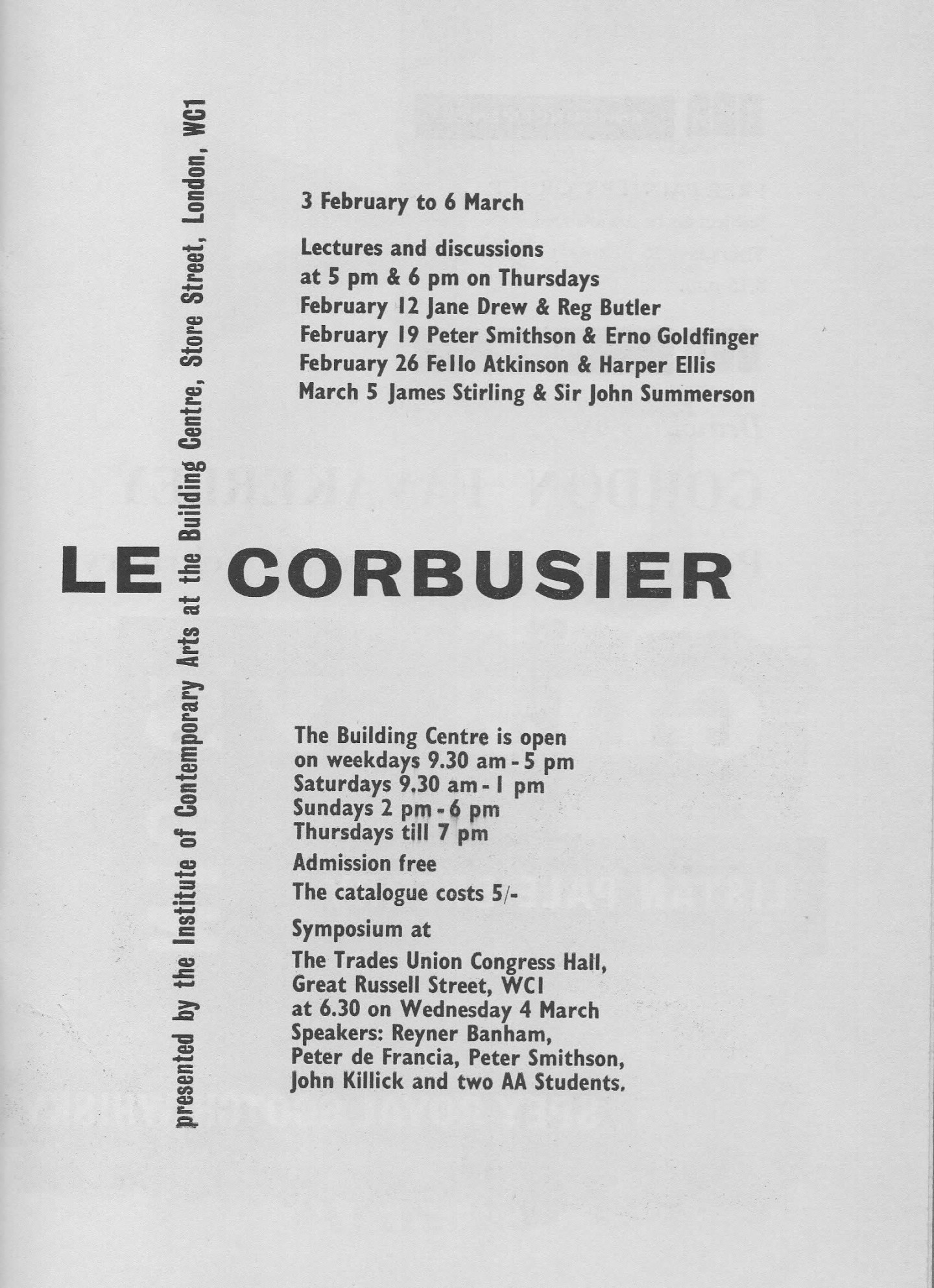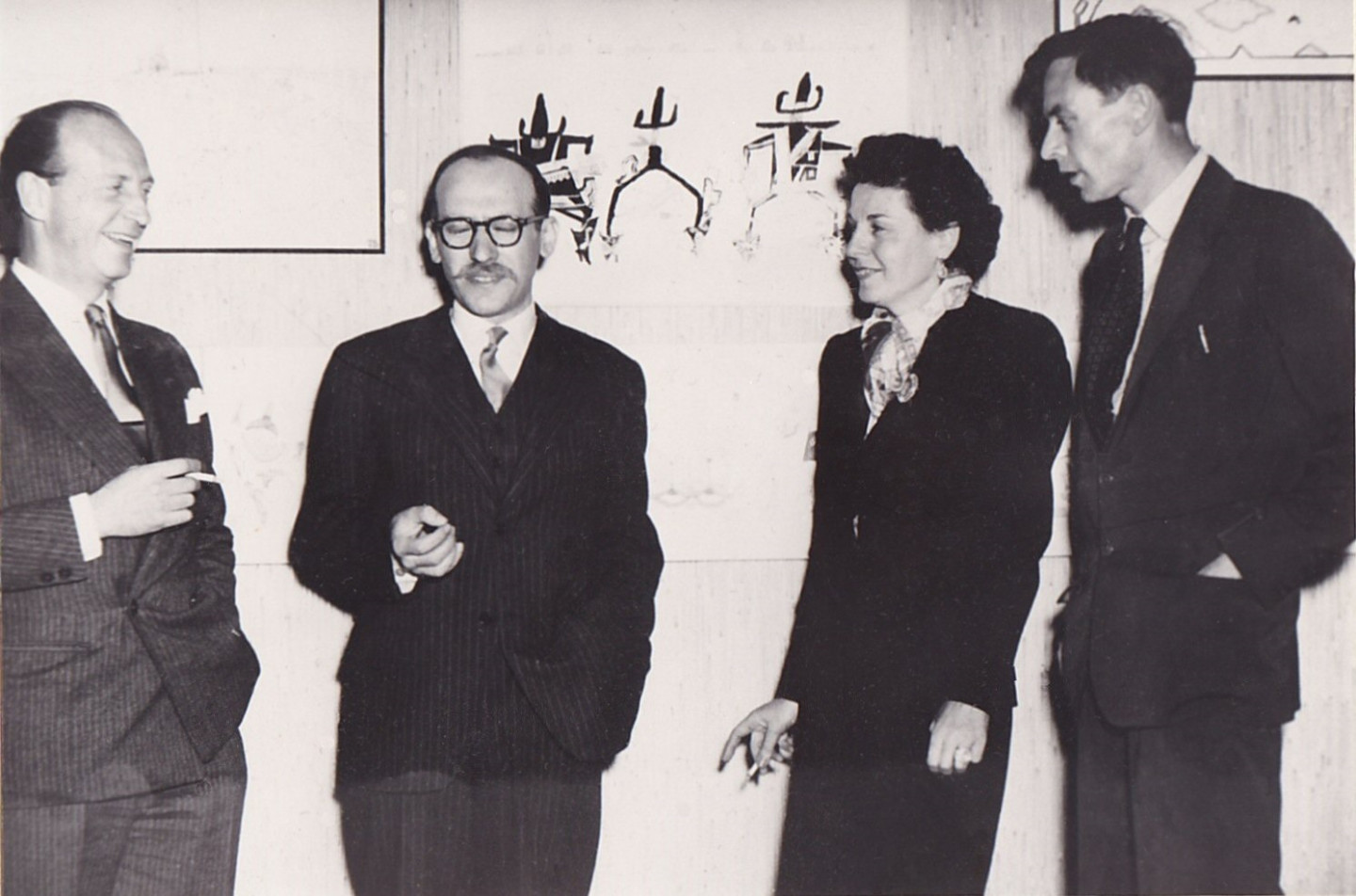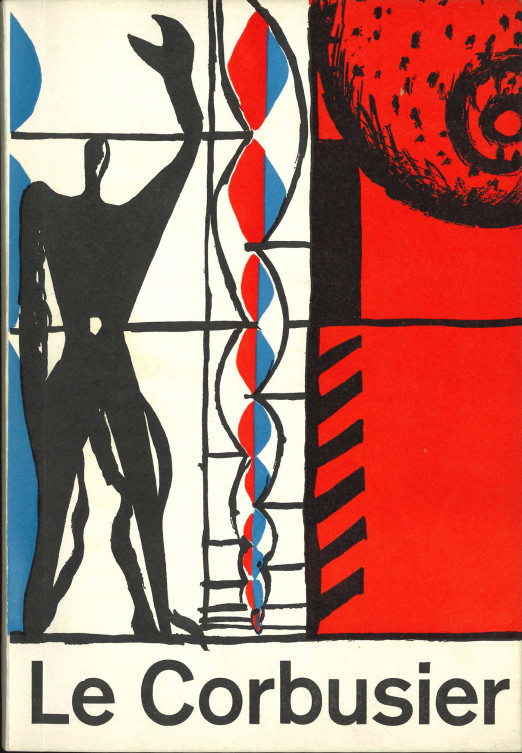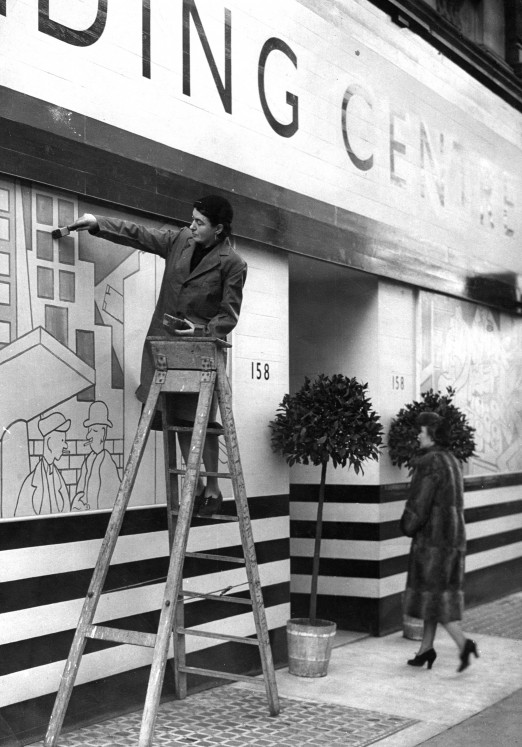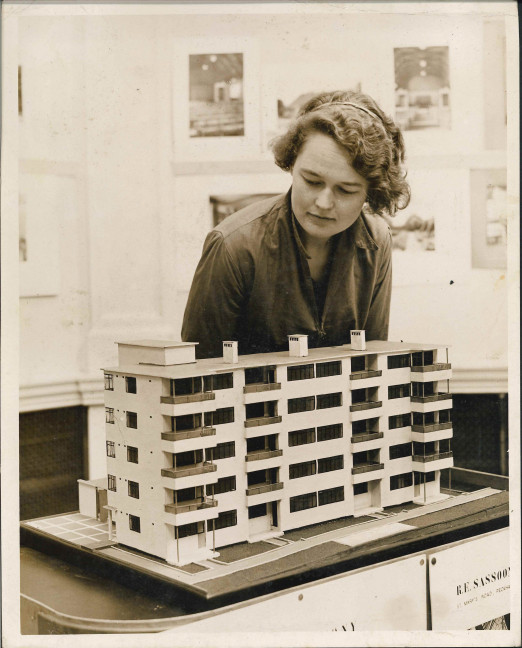The 1959 Building Centre exhibition devoted to Le Corbusier was controversial, due to continued resistance to modern architecture in post-war Britain. However, the Centre succeeded in joining forces with the Institute of Contemporary Arts (ICA) to mount the show, as well as Architectural Design to create a formidable avant garde network. A network which included pioneering women in design.
The exhibition had travelled from Liverpool’s Walker Art Gallery and was staged at the Building Centre: ‘…under the auspices of the ICA.’ (Fig 1) This was an entirely usual occurrence, as the ICA was regarded as London’s modernist HQ, and curated exhibitions and events at the Tate Gallery and Royal Burlington Galleries amongst other venues during the 1950s and 1960s. The ICA had been founded in culture starved London in 1946 by a group of passionate collectors and writers. They were devoted to hosting an avant garde headquarters for the interplay of modern architecture, art, design, music, painting and sculpture. The organisation had mounted an exhibition entitled Le Corbusier – paintings – drawings – sculpture – tapestry 1918-1953 in 1953, courtesy of the MARS Group’s close ties with the architect. (Fig 2) The ICA founders included the surrealist artist and patron of modern art, Roland Penrose and poet and art writer, Herbert Read whose contribution to the extensive Le Corbusier: Architecture, Painting, Sculpture, Tapestries exhibition catalogue was ‘Le Corbusier as Poet’, a transcription of the speech he had made at the RIBA when Le Corbusier was awarded a gold medal in 1953.
The exhibition was presented by the ICA, which meant curating the objects, models, tapestries and photographs installed in a difficult space across two floors. The designer Trevor Dannatt was responsible for the demanding installation work. The person masterminding the operation was the first and only female Director of the ICA, Dorothy Morland. She oversaw the smooth running of the organisation from 1950 until 1968 and worked tirelessly behind the scenes to keep the intense programme of monthly exhibitions, talks, discussions and collaborations running without a hitch. (Fig 3)
She was the sole representative the ICA on the London Exhibitions Committee of the Le Corbusier exhibition. The committee also included two important representatives of the Building Centre, its founder, the architectural photographer F R Yerbury and female architect, Jean Conder who had worked on the Festival of Britain and designed the interior of the Building Centre. Other bodies represented included the Arts Council, RIBA, AA and the Trustees of the MARS Group. The Chairman of the committee was Theo Crosby, who was Technical Editor of the leading architectural magazine, Architectural Design as well as a member of the Independent Group and ICA committee member. Dorothy Morland’s good friend, Jane Drew also sat on the committee as a Trustee of the MARS Group. Drew was a stalwart member of the ICA and oversaw the remodelling of the interior of its first premises in Dover Street, near Piccadilly Circus, in 1950. She wrote the Introduction for the exhibition catalogue, which was a homily to her architectural hero. Drew was well placed to write the eulogy, as she had been working with Le Corbusier on the Chandigarh project in India during 1951-3 in the modern creation of a new state capital for Punjab in India. Drew was a dominant force on the post-war British, architectural scene and one of the few female practicing architects in the country.
Jane Drew also contributed to the lectures and discussions programmed, probably by Morland, to accompany the exhibition. She spoke at the first session with the sculptor, Reg Butler who had won the Unknown Political Prisoner competition, run by the ICA in 1953. The second session involved the architect, Peter Smithson, who had cut his teeth on sessions held at the ICA in the semi-clandestine group, the Independent Group which Morland had enabled. He worked closely with his wife and fellow architect, Alison Smithson on all of their projects. Anther Independent Group member, the architect, James Stirling, contributed to the fourth session.
There was a high-profile symposium devoted to Le Corbusier at the Trades Union Congress Hall towards the end of the exhibition run. This was organised by the ICA in collaboration with the Architectural Association (AA). This involved Peter Smithson once more, who was teaching at the AA at the time and was joined by his fellow lecturer, John Killick and two of their students. Other Independent Group members to contribute to the Symposium included Reyner Banham. He had already given an intriguing talk at the ICA on 17th February 1959 entitled, ‘Le Corbusier: Oeuvres Suppremées’ where he pinpointed the ‘Buildings which Le Corbusier has sought to efface: and the general problem of suppression in the Modern movement.’
Whilst Le Corbusier’s reputation was secured through the careful curating of his own history and legacy, as Banham suspected, Conder, Drew and Morland have been ghostly figures on the fringes of history until recently. They both contributed extensively to the organisation and staging of the Le Corbusier exhibition, which enhanced the modernist credentials of both the ICA and the Building Centre.
Anne Massey, Professorial Fellow, Canterbury School of Architecture, University for the Creative Arts is author of Women in Design (Thames & Hudson 2022).
